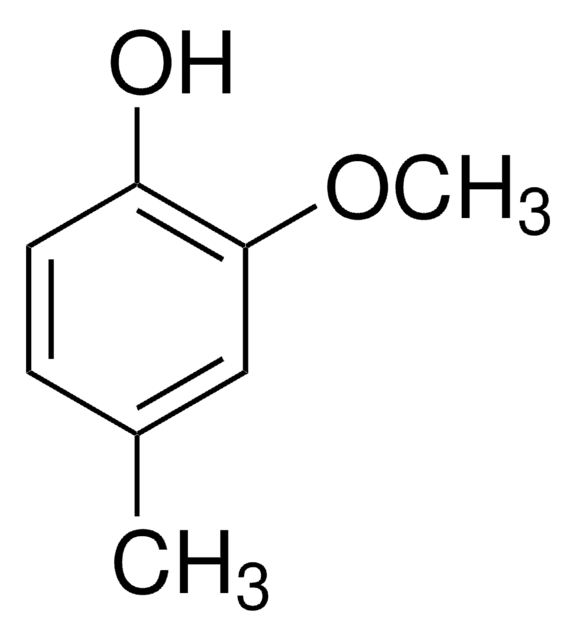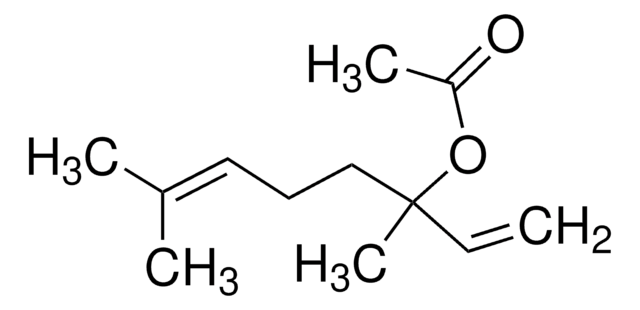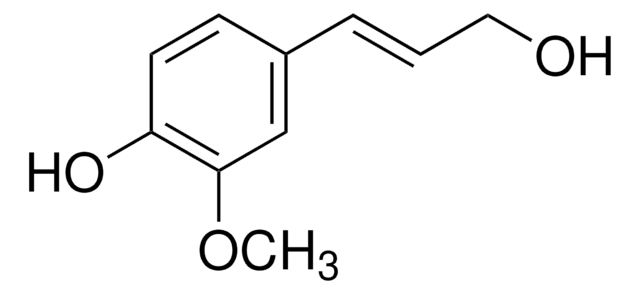Kluczowe dokumenty
34038
Isoeugenol
analytical standard
Synonim(y):
2-Methoxy-4-propenylphenol
About This Item
Polecane produkty
klasa czystości
analytical standard
Poziom jakości
gęstość pary
>1 (vs air)
ciśnienie pary
<0.01 mmHg ( 20 °C)
okres trwałości
limited shelf life, expiry date on the label
metody
HPLC: suitable
gas chromatography (GC): suitable
współczynnik refrakcji
n20/D 1.575 (lit.)
bp
132 °C/10 mmHg (lit.)
gęstość
1.084 g/cm3
Zastosowanie
cleaning products
cosmetics
environmental
flavors and fragrances
food and beverages
personal care
Format
neat
ciąg SMILES
OC1=CC=C(/C=C/C)C=C1OC
InChI
1S/C10H12O2/c1-3-4-8-5-6-9(11)10(7-8)12-2/h3-7,11H,1-2H3/b4-3+
Klucz InChI
BJIOGJUNALELMI-ONEGZZNKSA-N
Szukasz podobnych produktów? Odwiedź Przewodnik dotyczący porównywania produktów
Opis ogólny
Zastosowanie
Hasło ostrzegawcze
Warning
Zwroty wskazujące rodzaj zagrożenia
Zwroty wskazujące środki ostrożności
Klasyfikacja zagrożeń
Acute Tox. 4 Dermal - Acute Tox. 4 Oral - Eye Irrit. 2 - Skin Irrit. 2 - Skin Sens. 1A - STOT SE 3
Organy docelowe
Respiratory system
Kod klasy składowania
11 - Combustible Solids
Klasa zagrożenia wodnego (WGK)
WGK 2
Temperatura zapłonu (°F)
233.6 °F - closed cup
Temperatura zapłonu (°C)
112 °C - closed cup
Środki ochrony indywidualnej
dust mask type N95 (US), Eyeshields, Faceshields, Gloves
Wybierz jedną z najnowszych wersji:
Masz już ten produkt?
Dokumenty związane z niedawno zakupionymi produktami zostały zamieszczone w Bibliotece dokumentów.
Klienci oglądali również te produkty
Nasz zespół naukowców ma doświadczenie we wszystkich obszarach badań, w tym w naukach przyrodniczych, materiałoznawstwie, syntezie chemicznej, chromatografii, analityce i wielu innych dziedzinach.
Skontaktuj się z zespołem ds. pomocy technicznej






